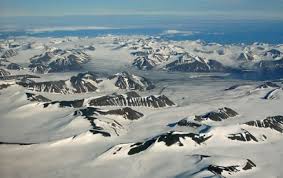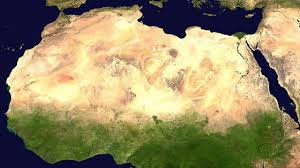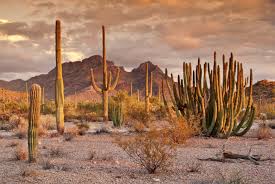Overview
Desert lands generally receive less than 10 inches of rainfall per year, and sometimes receive no rainfall in a year. Desert climates may be hot or cold, and the topography may be flat or mountainous.
Polar Desert
The continent of Antarctica is considered a polar desert. It receives less than 8 inches of rainfall on the average, and the Dry Valleys are not covered by snow and ice, but exist as barren rock. Few forms of vegetation can live in such extreme conditions. There are some lichen-forming fungi, snow algae, and various forms of hardy bacteria. Some parts of the Arctic Basin also receive less than 6 inches of precipitation, and are also technically considered a desert.
Sahara, Arabian, and Syrian Desert
The Sahara Desert is the third largest desert area in the world, and is the largest hot desert. It is located in northern Africa, and includes some of the hottest areas during the summer, with average temperatures over 100 degrees F (38° C). Most of the Sahara consists of barren, rocky areas where most of the sand has blown away, although large sand dunes cover other areas, as well as salt flats. The plants and animals that live on the desert conserve what little water there is. The Arabian Desert and the Syrian Desert cover most of the Middle East. Some of the land is rocky and some is covered with sand.
Deserts in Asia and Australia
The Gobi Desert is a large desert area in Mongolia and Northern China. Clouds carrying rain from the Indian Ocean cannot cross the Himalayas, so the rain shadow area has less than 8 inches of precipitation in a year. Sometimes snow falls on the sand dunes during the winter. By contrast, much of the desert land in Australia is hot, with the hardiest shrubs and grasses growing along sand dunes. Small marsupials and lizards survive the heat by burrowing into the sand.
Deserts in North and South America
Some of the desert area in North and Central America include regions that are parts of the states of Utah, Nevada, California, southern Idaho, and Arizona, as well as parts of Mexico. These desert lands contain many more familiar species of cactus, sagebrush, and other scrub vegetation, as well as lizards and many different varieties of snakes. The Patagonian Deserts in Chile and Argentina are in the rain shadow of the Andes Mountains.
Interested in science tutoring services? Learn more about how we are assisting thousands of students each academic year.
SchoolTutoring Academy is the premier educational services company for K-12 and college students. We offer tutoring programs for students in K-12, AP classes, and college. To learn more about how we help parents and students in Tucson, AZ: visit Tutoring in Tucson, AZ




